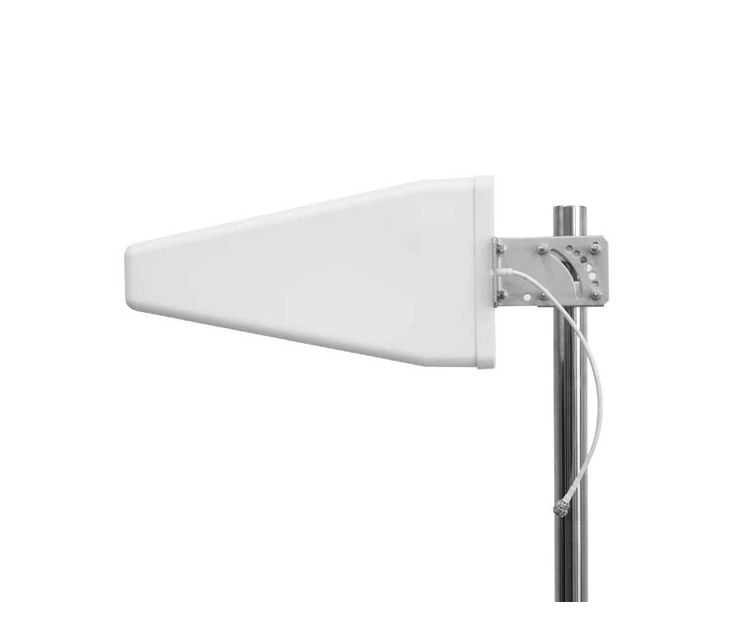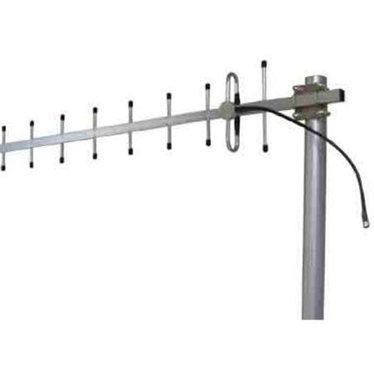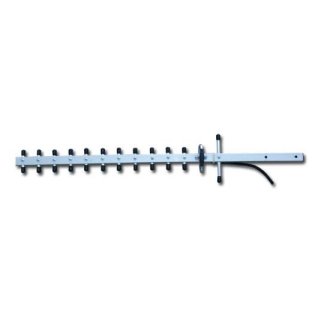In the rapidly evolving landscape of wireless communication, antennas play a crucial role in ensuring reliable and efficient signal transmission. Among the various types of antennas available, LPDA (Log Periodic Dipole Array) and Yagi antennas stand out for their unique characteristics and applications. These antennas have been widely adopted in diverse communication systems, each offering distinct advantages that cater to different needs. This article aims to provide a comprehensive guide on LPDA and Yagi antennas, exploring their definitions, advantages, differences, and applications, as well as offering insights on how to choose the right antenna for your specific requirements.
What is a Log Periodic Antenna?
A Log Periodic Antenna, commonly referred to as an LPDA, is a multi-element, directional antenna designed to operate over a wide band of frequencies. It consists of a series of dipole elements of varying lengths, arranged in a specific pattern that allows the antenna to maintain consistent performance across its operational frequency range. This frequency-independent behavior makes LPDA antennas suitable for broadband applications in fields like communications and broadcasting.
LPDA antennas exhibit a directional radiation pattern, which can be enhanced by using a reflective screen to make them unidirectional. They are known for their wide bandwidth, low VSWR (Voltage Standing Wave Ratio), high gain, and low PIM (Passive Intermodulation). These features ensure reliable performance in various communication systems.
Advantages of Log Periodic Antenna
The advantages of LPDA antennas include
Wide Frequency Range: LPDA antennas can operate across a broad spectrum of frequencies, making them versatile for applications requiring frequency agility.
Directional Gain: They provide stable directional gain, which is beneficial for long-range communication.
Compact Design: LPDA antennas are generally compact and can be used in applications with space limitations.
Easy Installation: They are relatively easy to install and maintain, making them a convenient choice for many users.
What is a Yagi Antenna?
A Yagi antenna, also known as a Yagi-Uda antenna, is a directional antenna that consists of a driven element and multiple parasitic elements, including reflectors and directors. These elements work together to focus signals in a specific direction, enhancing the antenna's gain and directivity. Yagi antennas are commonly used in applications requiring high gain and focused signal transmission, such as television reception and amateur radio.
Advantages of Yagi Antennas
The advantages of Yagi antennas include
High Gain: Yagi antennas offer significant directional gain, making them ideal for point-to-point communication and long-distance signal reception.
Directional Control: They focus signals in a specific direction, reducing interference from unwanted sources.
Simplicity and Cost-Effectiveness: Yagi antennas are relatively easy to construct and maintain, making them a cost-effective solution for many applications.
Key Differences Between Log Periodic Antenna and Yagi Antenna
The key differences between LPDA and Yagi antennas are
Frequency Range: LPDA antennas operate over a wide frequency range, while Yagi antennas are typically designed for a narrow frequency band.
Directionality: Yagi antennas are highly directional, focusing signals in a specific direction, whereas LPDA antennas can provide a broader angular coverage.
Size and Form Factor: Yagi antennas are often larger and bulkier due to their linear array of elements, while LPDA antennas are generally more compact.
Which Antenna to Choose?
When deciding between LPDA and Yagi antennas, consider the specific requirements of your application:
Frequency Needs: If you need to cover a wide frequency range, LPDA might be the better choice. For focused, high-gain transmission, Yagi is preferable.
Directionality: If your application requires a directional signal, Yagi is ideal. For broader coverage, LPDA is more suitable.
Environmental Factors: Consider the environmental conditions where the antenna will be used. Yagi antennas are robust and adaptable, while LPDA antennas are easy to install and maintain.
BBT ANTENNAS: A Leading Antenna Supplier in China
At BBT ANTENNAS, we specialize in designing, producing, and marketing a wide range of antenna products, including LPDA and Yagi antennas. Our LPDA antennas support 6G and 5G communication systems, making them perfect for outdoor directional distributed systems (DAS). They feature wide bandwidth, low VSWR, high gain, and low PIM, ensuring excellent performance in main communication systems. Installation and use are convenient, making them a popular choice for many users.
Our Yagi antennas are designed for wireless access systems and wireless data transmission. They boast a firm aluminum structure, providing stable performance and environmental adaptability. These antennas are ideal for applications requiring reliable and focused signal transmission.
Conclusion
In conclusion, LPDA and Yagi antennas cater to different needs in the world of wireless communication. LPDA antennas offer versatility with their wide bandwidth and ease of use, while Yagi antennas provide focused, high-gain performance. Choosing LPDA antennas or Yagi antennas depends on your needs.
Whether you need robust signal strength across a broad frequency range or focused transmission for point-to-point communication, BBT ANTENNAS can help you. Use our products to improve your business now!



